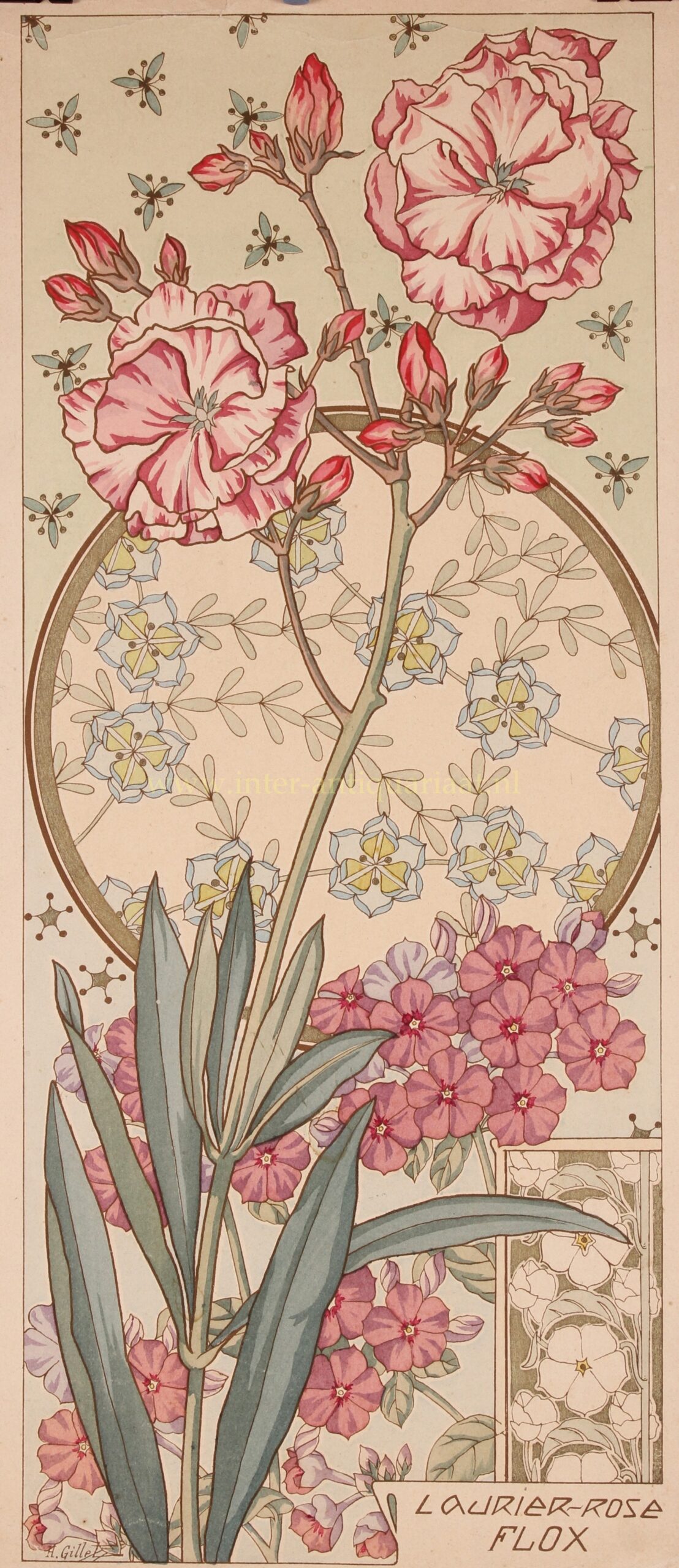Art Nouveau oleander and phlox – Henri Gillet, c. 1900
€450
“Laurier-Rose Flox” [Oleander and phlox],” colour lithograph produced around 1900 by Henri Gillet. Signed in the print below the image. Size approx. 42 x 18 cm.
This beautiful small poster features a graceful, asymmetrical composition typical of Art Nouveau. Nature often served as the primary inspiration, showcasing long-stemmed, gracefully stylized plants and flowers. The graceful flowers were depicted in a style reminiscent of Japanese prints: two-dimensional and almost abstract, with an elegant composition and vibrant colours.
The renowned art dealer Siegfried Bing was a driving force behind the increasing Japanese influences in the Western art world. The prints imported by Bing were eagerly embraced by artists seeking a new style, including Vincent van Gogh. Bing specialized in Japanese art at his Parisian gallery, L’Art Nouveau, from which the movement derived its French name.
The Nerium Oleander, also known simply as the Oleander, is a beautiful yet poisonous flower renowned for its attractive appearance and floral splendor. It’s an evergreen shrub with narrow, lance-shaped leaves and flowers that grow in large clusters. The blooms are usually pink, white, red, or yellow and have a distinctive shape with five petals forming a star. They emit a sweet and intoxicating fragrance that can intensify in warm climates during spring and summer.
The phlox is a beautiful flower known for its vibrant colours and pleasant scent. It’s a perennial plant that blooms in a wide range of colours, depicted here in pink, with a flowering period that typically falls in summer. The flowers grow in dense clusters atop slender stems and usually have five rounded, overlapping petals.
Both flowers are combined here into a harmonious composition. The contrasts between elegant shapes, vibrant colours, and delicate details create a visually appealing and captivating whole.
Price: Euro 450,-


